
Bali, known as the island of the Gods, boasts a variety of magnificent flora. Many of these cherished plants and flowers hold a cultural significance and are admired for their beauty. Importantly, the flowers of Bali play a vital role in various ceremonies, rituals and celebrations. Rooted deeply in Balinese culture, they hold deep meanings passed down through generations.
When in Bali, one cannot help but notice myriads of colourful flowers presented in sesajen or offerings seen all over the island. Among these offerings the canang sari is the most common, with the smallest size. It is found on almost every corner of the street; in front of shops, temples, offices, and several other places.
Peporosan
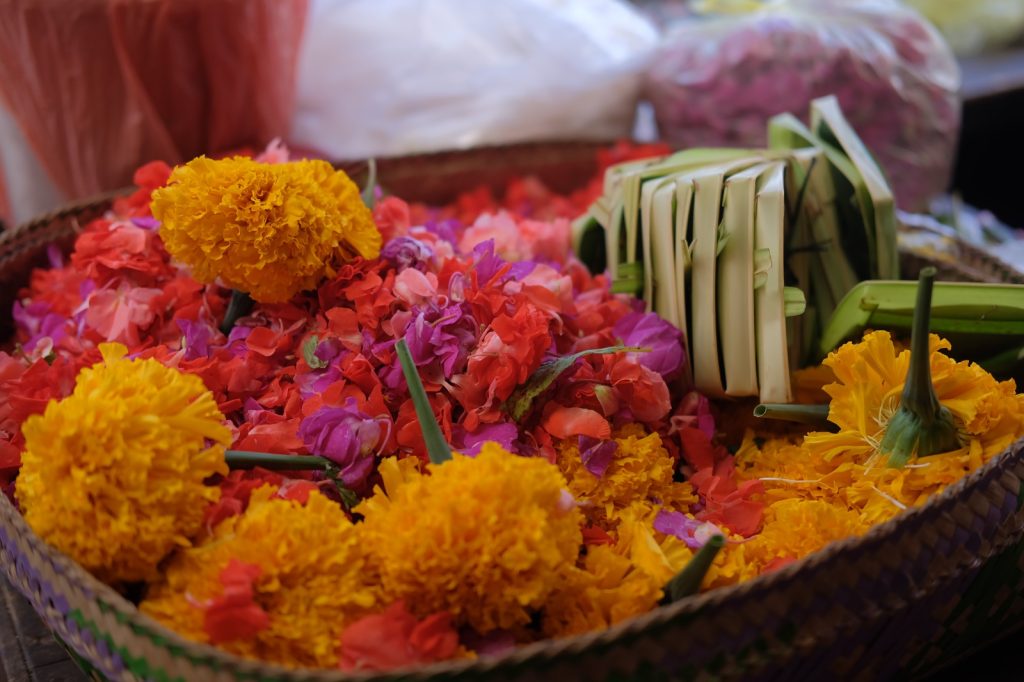
The filling of offerings is referred to as a peporosan. It finds its inspiration in ancient wisdom. As depicted in the great Mahabharata epic, the act of offering even a simple leaf, flower, fruit, or water is seen as a gesture of pure devotion, one that the gods accept with open hearts.
Flowers used in offerings must be fresh and fragrant, symbolising sincerity and purity. However, not just their freshness matters. Essential aspects of the peporosan are the kind of flowers used, their cardinal direction and their colours.
Balinese flowers
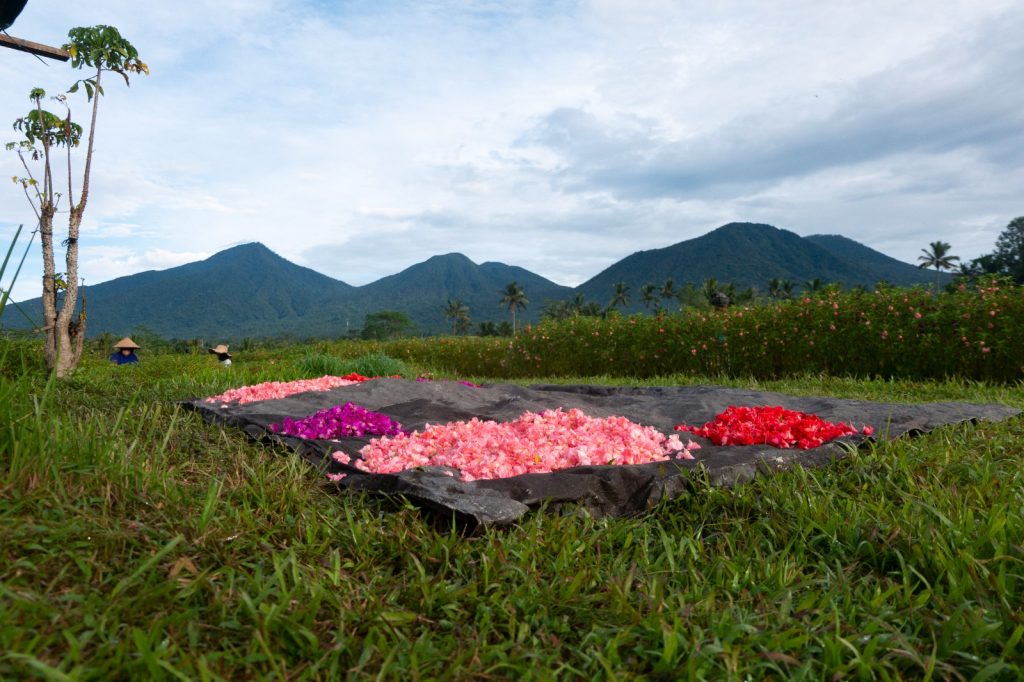
In the vibrant culture of Bali, flowers hold deep meanings. The frangipani for example, with its five-petaled blossoms, embodies the interconnectedness of all living beings with the cosmos. It represents the five elements of the universe: earth, water, fire, air and ether. Found abundantly near temples and homes, their trees offer blooms for prayers and offerings at any time.
Similarly, the lotus or padma emerging gracefully from muddy depths to symbolise prosperity and fertility, holds a special place in Balinese belief. The Lotus comes in various colours, each carrying its own significance. Within Balinese Hinduism, it is believed that every individual possesses the sacred lotus spirit, being able to bloom from the mud. What’s more, the principal shrine in temples is known as the Padmasana, or the ‘lotus throne’, and is reserved to worship Sang Hyang Widi Wasa — or the Supreme God in Balinese Hinduism. This is located in the inner most sanctum of the temple complex.
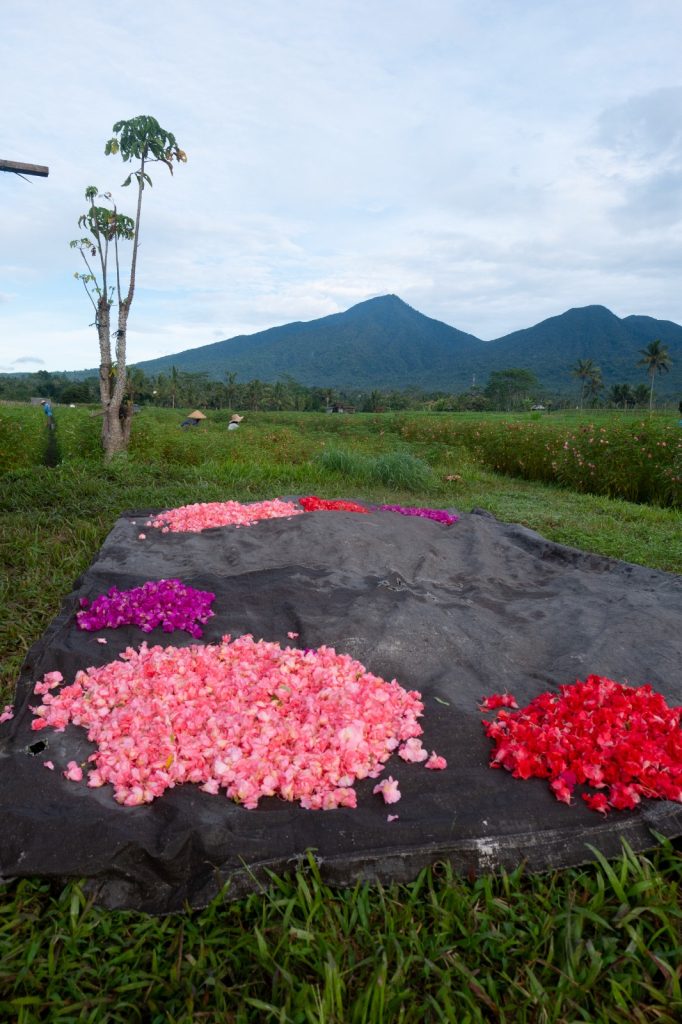
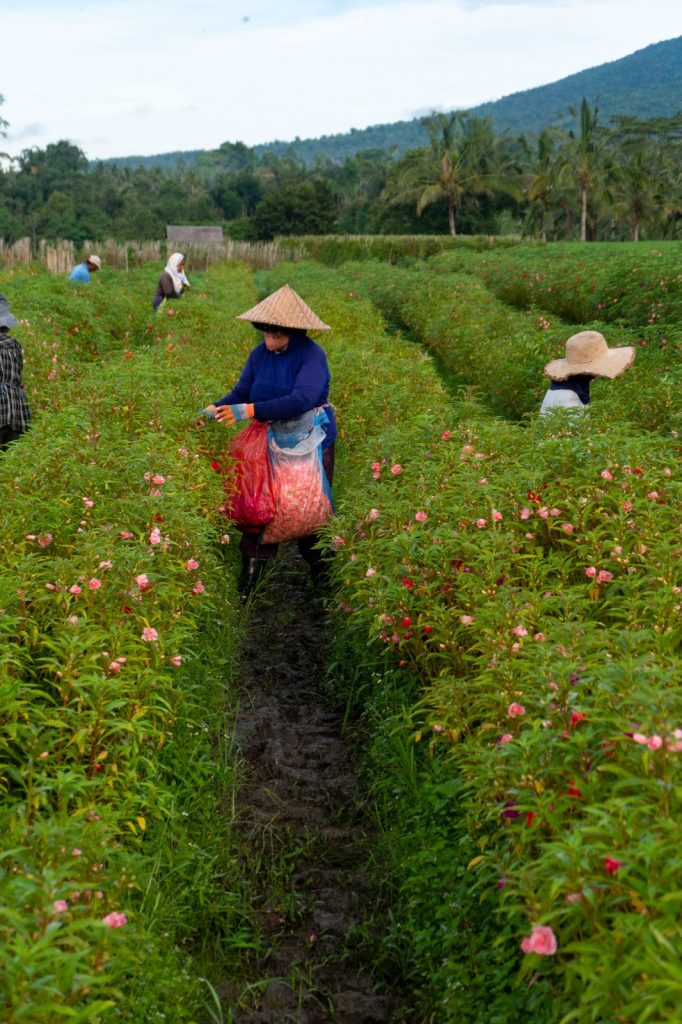
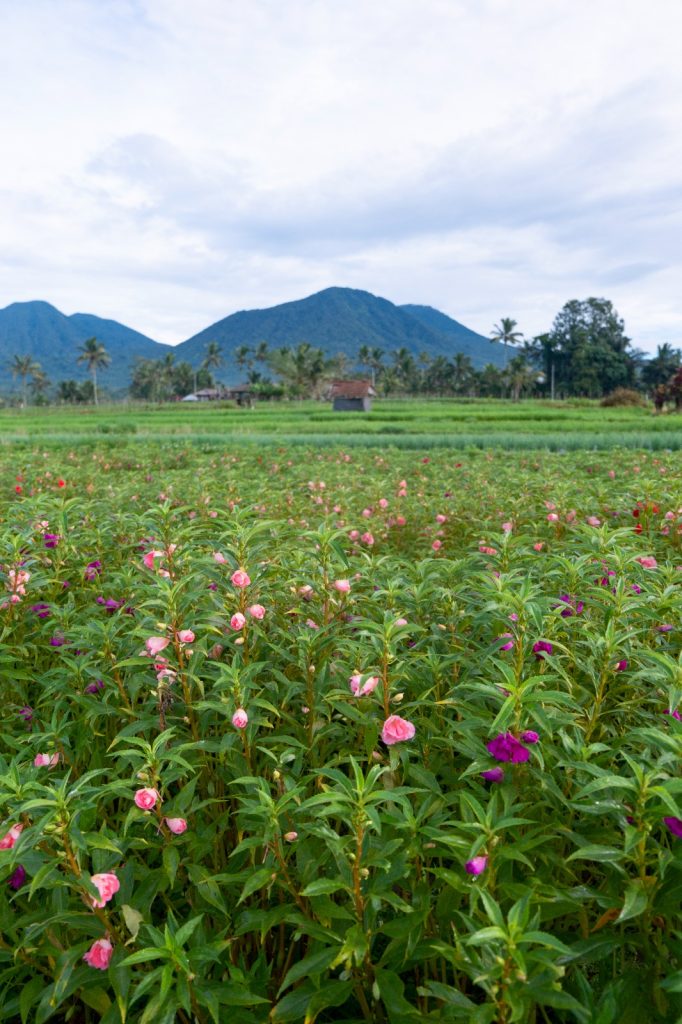
Revered for its fragrance only emitting during nighttime, the tuberose is believed to connect with the divine. The white flower is put into offerings to create a sense of tranquility and spiritual harmony. Meanwhile, vibrant marigolds symbolise the sun, life and positive energy. The bright yellow and orange flowers are used in offerings ever since flowers are included in offerings. They are believed to provide protection against negative energies and evil spirits.
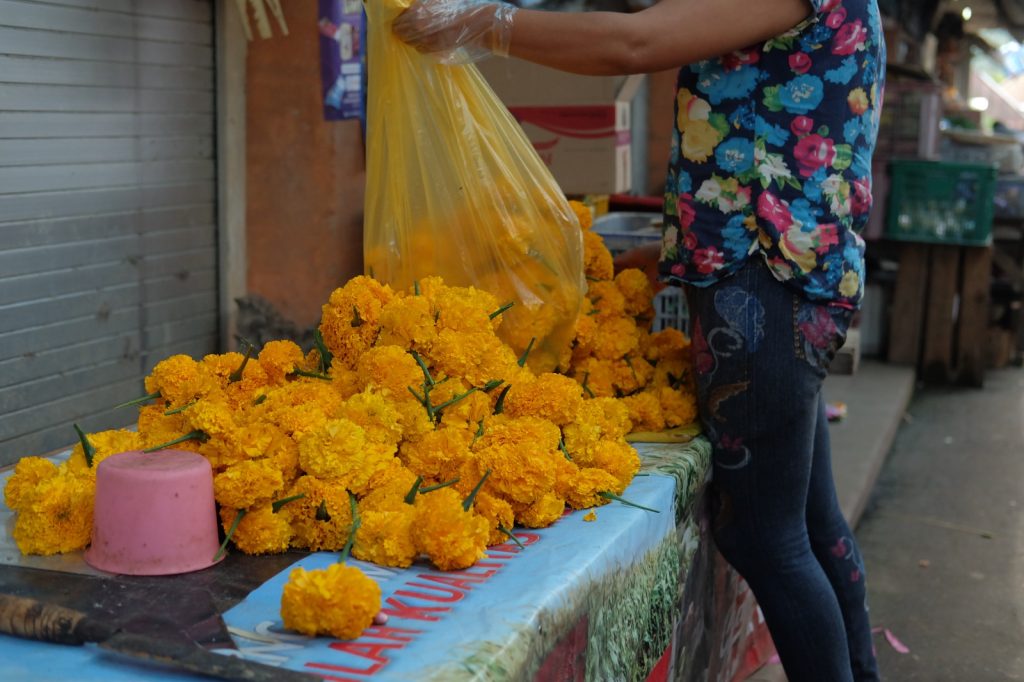
These are just a few examples of the beautiful flowers Bali is rich in. Many more are used in offerings, like hibiscus, gomphrena and champaca.
Colour Symbology
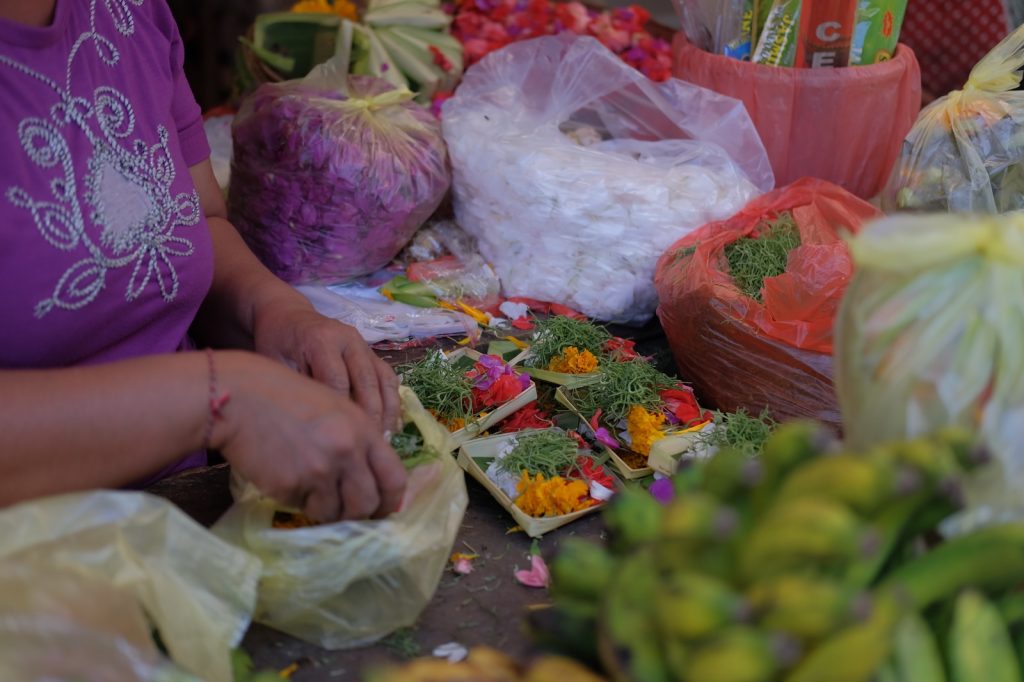
The importance of flowers in Bali Hindu culture cannot be understated. A flower’s colour plays a crucial role as well. Each colour carries its own symbolism and is meticulously selected based on its meaning and association. They must represent the Trimurti, the three major Hindu Gods. Red is associated with Brahma, the creator, green signifies Wisnu, the preserver and white is for Shiva, the destroyer. Traditionally, offers include the areca or betel nut (red), betel leaf (green) and lime (white). However, flowers, banana, sugarcane or shredded pandan leaves also do the job.
In addition to the choice of colours, their orientation is equally significant. Each direction presents different deities. Red flowers pointing towards the south are dedicated to Brahma, while the green ones facing north pay homage to Wisnu and the white ones, directed eastward signify Shiva. Yellow flowers pointing westward symbolise Mahadeva; often associated with Shiva in the form of a man with a third eye on his forehead.
Nawasanga wheel
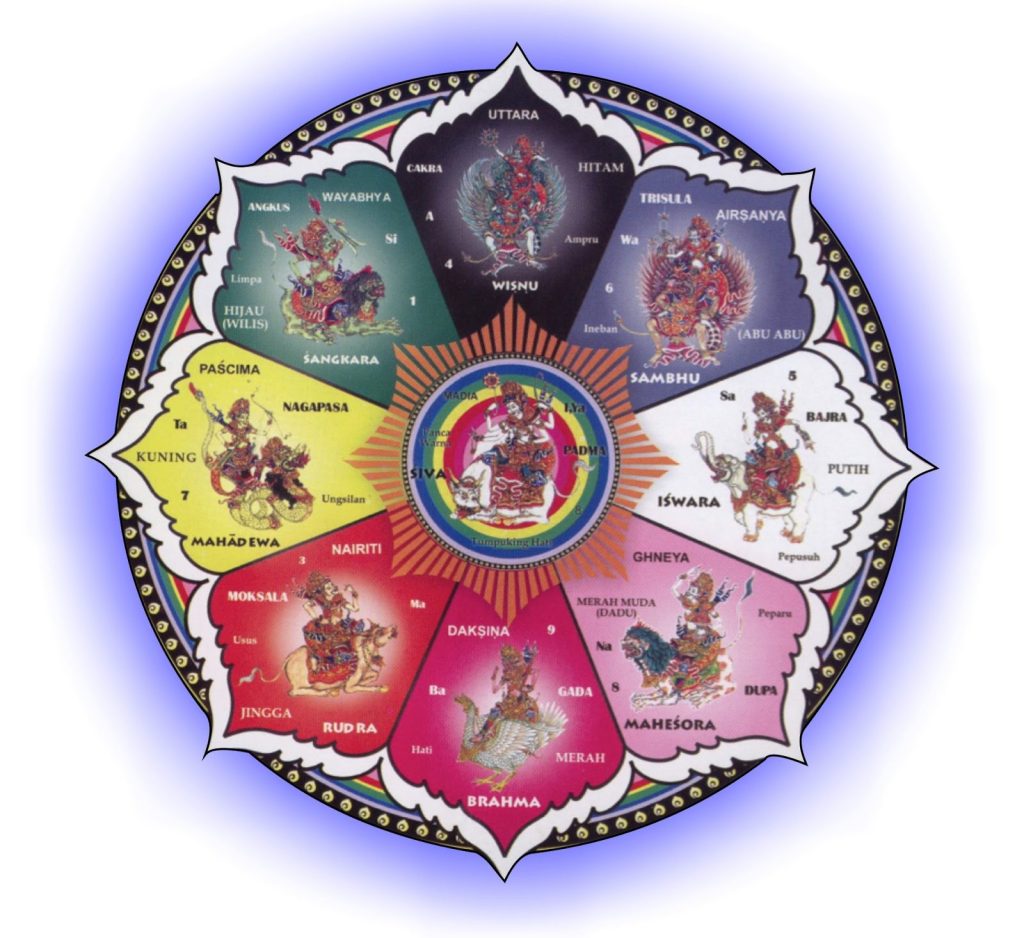
The significance of colour and direction is more extensively explained in the Nawasanga wheel. In the wheel, derived from the Majapahit Empire (13th-16th century), colours are associated with different aspects of Balinese culture. The aspects are structured within nature’s perfect symbol of unity: the circle. This Balinese creation holds a more profound significance of colour. The mandala would symbolise the psychological and spiritual self and would lead to greater self-awareness. The circle identifies nine specific areas considered sacred and is believed to map all aspects of reality.
Apart from colours, a variety of aspects of Bali’s culture is represented on the wheel. To paint a picture: Bali’s high temples, numbers, letters, sounds, sacred weapons, body parts, plants, demons, tones on the musical scale and symbols are factors illustrated and connected to one another. Orange, for instance, is associated with God Rudra, Goddess Sachi, the temple of Uluwatu, the buffalo and the number 3.
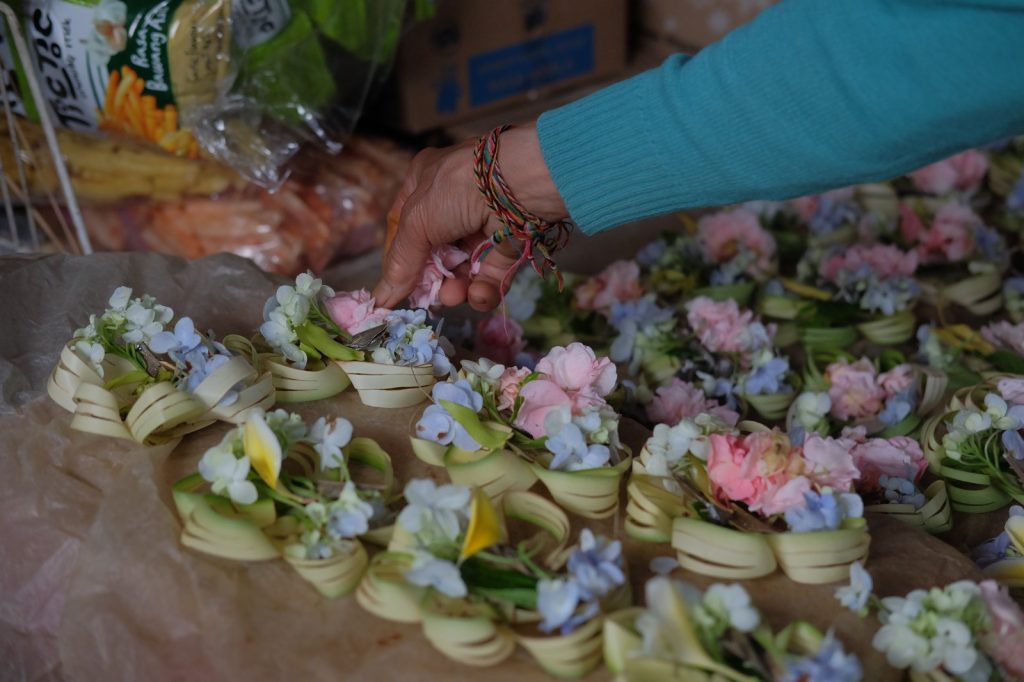
As one delves deeper into the floral heritage of Bali, a world of symbolism and tradition unfolds. From streets adorned with colourful offerings to temples enveloped in fragrant blooms, the flowers of Bali serve as a conductor for Bali’s vivid culture in all its forms.









